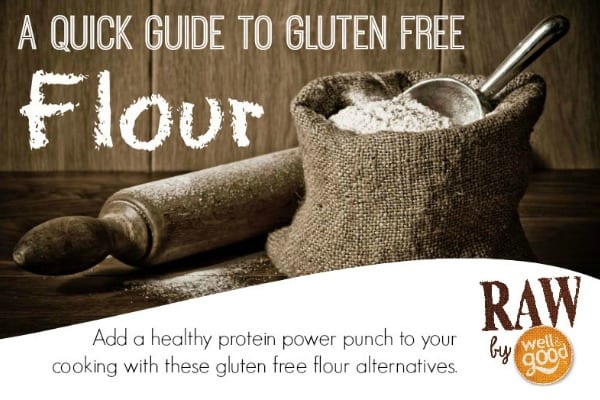Gluten Free Resources
Gluten Free Flour Guide
Get the information you need to make your own gluten free flours that are packed with nutritional goodness. Check out the infographic below which provides a summary of many flours that are great alternatives to wheat based flours.
Gluten free flours can be broken up into three main types: light, medium and heavy based flours.
Light based flours: This type of flour is a starch and is essential for gluten free baking. It replaces gluten by providing binding and structure. Common starches include tapioca, potato and corn starch. Their flavours tend to be neutral and can therefore be used in a wide range of recipes.
Medium based flours: This flour type is more nutritious that starches; however, they are much more stable when combined with a starch. Typical flour types include millet, quinoa and rice flour which are high in protein and other essential amino acids.
Heavy based flours: These are very dense and nutritious and should definitely be used in conjunction with a medium and or light based flour. Examples of these include buckwheat, coconut and teff flour.
Creating your own flour
 This isn’t difficult. You can simply combine various flours in a large airtight container, shake, and you can store away with no loss of quality. We recommend using 2 parts of medium or heavy flour to 1 part light flour. For example, use 1 cups of buckwheat, 1 cup of quinoa with 1 cup of tapioca flour.
This isn’t difficult. You can simply combine various flours in a large airtight container, shake, and you can store away with no loss of quality. We recommend using 2 parts of medium or heavy flour to 1 part light flour. For example, use 1 cups of buckwheat, 1 cup of quinoa with 1 cup of tapioca flour.
A couple of options to get you started
- Option One = 2 medium flours, 2 starches
- Option Two = 1 medium flour, 1 heavy flour and starch.
Remember to use the 2:1 ratio rule as a good starting point but don’t be afraid to trial different mixtures. If you come up with any winning combinations feel free to add your comment below or send us an email. We’d love to hear from you.


